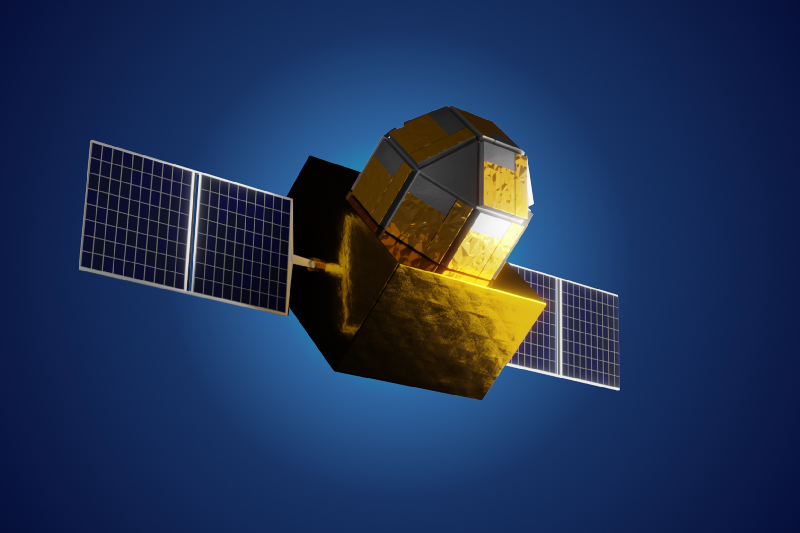
IIT Bombay’s ‘Daksha’ Mission: India’s Bold Leap into Deep Space Exploration
A New Era for Indian Science
India’s space ambitions are set to enter an exciting new chapter with ‘Daksha’, a pioneering mission spearheaded by Professor Varun Bhalerao from the Physics Department at IIT Bombay. Designed to house the world’s most powerful space telescopes, the mission aims to revolutionize how scientists study the universe. India worked to keep pace with global innovations for decades, but as Prof. Bhalerao states, “The age of catching up is over. Now is the time to be world-class.”
If realized, Daksha could position India among the global leaders in deep space exploration, unlocking answers to some of the most fundamental questions in physics and astronomy.
The Vision Behind Daksha
The Daksha mission involves launching two satellites equipped with gamma-ray telescopes capable of monitoring 1.81 million cubic megaparsecs of space—a field nearly five times larger than NASA’s current benchmark, the Fermi Gamma Ray Telescope. Such capacity would make Daksha a game-changer in observing rare cosmic events.
Supported by leading research institutes including the Tata Institute of Fundamental Research (TIFR), Raman Research Institute (RRI), Physical Research Laboratory (PRL), and the Inter University Centre for Astronomy and Astrophysics (IUCAA), Daksha represents a collaborative effort that blends technology, science, and innovation.
According to Bhalerao, the satellites can be built and launched within three years once financial and policy approval is given.
How Daksha Was Born
The mission traces its origins to 2018, when the Indian Space Research Organisation (ISRO) invited proposals for new space missions. A committee led by Prof. Ajit Kembhavi, former director of IUCAA, evaluated projects based on feasibility, innovation, and global impact. Daksha stood out as the most promising candidate.
Kembhavi explains, “The technology is proven, the cost is reasonable, and its performance surpasses anything else. It’s a technological and scientific sweet spot.”
Following the shortlisting, ISRO provided seed funding to test critical systems. By December 2022, Daksha successfully met all technical requirements, but progress has since stalled due to pending approvals. The mission has awaited full-scale financial and policy clearance for over two and a half years.
What Daksha Aims to Discover
At its core, Daksha is designed to study sources of gravitational waves, such as black holes and neutron stars, which emit bursts of gamma rays during collisions. These gamma-ray bursts are among the most powerful events in the universe and hold clues to cosmic mysteries.
Astrophysicist Prof. Dipankar Bhattacharya from Ashoka University highlights the stakes:
- How did the universe originate?
- What drives its expansion?
- What were the earliest moments like after the Big Bang?
By capturing data from such events, Daksha could provide insights into the universe's origins and help answer questions that puzzle scientists globally.
The Role of Students and the STAR Lab
One of Daksha’s most inspiring aspects is its strong student involvement. Gaurav Waratkar, now a postdoctoral scholar at the California Institute of Technology (Caltech), was part of the original student team behind the concept. Reflecting on the project, he says, “It has been the fundamental driving force behind our plans, hopes, and dreams for the last seven years.”
Waratkar’s journey from mechanical engineering to physics underlines how Daksha became a magnet for young minds seeking challenges. At IIT Bombay, the Space Technology and Research (STAR) Lab, led by Prof. Bhalerao, typically engages 15–20 students from multiple disciplines on research projects. Bhalerao recalls finding students working even during Ganesh Chaturthi, a state holiday—not out of obligation, but passion.
This blend of mentorship, open labs, and student enthusiasm has become a hallmark of Daksha’s culture.
The Global Race for Deep Space Exploration
The timing of Daksha is critical. While the global appetite for space exploration grows, NASA and other Western space agencies have slowed development of major telescopes. The last significant NASA telescope dedicated to gamma-ray research launched back in 2008. Since then, this field has largely stalled, leaving room for emerging powers to take the lead.
Prof. Bhalerao warns that India cannot afford delays: “If we don’t want to hand over deep space exploration on a platter to China, we must act now.”
With China making rapid advances in space technology, the approval and timely execution of Daksha could secure India a leading role in one of the most competitive frontiers of science.
What Lies Ahead
If approved, Daksha will be another space mission and a flagship project showcasing India’s ability to lead in cutting-edge science. The mission combines proven technology, collaborative expertise, and the passion of India’s young researchers, creating an ambitious and achievable platform.
The challenge, however, lies in overcoming bureaucratic delays. While ISRO’s seed funding and certification have validated Daksha’s feasibility, the mission cannot proceed without decisive policy and financial support.
Conclusion
The Daksha mission represents more than satellites and telescopes—it embodies India’s determination to move from catching up to setting the pace in global science. With the potential to unravel the mysteries of black holes, neutron stars, and the universe's origins, Daksha is both a technological marvel and a scientific necessity.
The window of opportunity is narrow, and the global race is heating up. If India acts swiftly, Daksha could mark a historic leap in deep space exploration, securing the nation’s place among the true pioneers of the cosmos.



